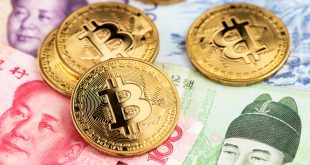The Fed will likely move ahead with another 25-basis point cut at its December meeting. The Federal Reserve’s last meeting in 2024 is poised to be a pivotal moment in the ongoing economic battle against inflation in the United States. As the US central bank prepares to deliver its final interest rate decision for the current year, a delicate balance between taming inflation and fostering economic growth will be on full display.
The current year has been a rollercoaster ride for the Fed’s policymakers. After a period of aggressive rate hikes aimed at curbing soaring inflation, the central bank has gradually shifted its stance to a more accommodative approach. The November rate cut signaled a recognition of moderating inflationary pressures as well as growing concerns about economic slowdown and concrete fears of falling into a recession. However, the path forward remains fraught with uncertainty.
The incoming administration’s economic policies could significantly impact the Fed’s decision-making process, according to most economists. Proposed fiscal measures, such as increased government spending and potential tax cuts, could probably stoke inflationary fires and, therefore, could force the central bank to find feasible ways in order to reassess its monetary stance. Additionally, geopolitical tensions, global economic developments, and, of course, supply chain disruptions could further complicate the future outlook of the US economy.
While a rate cut in the looming December’s FOMC meeting is widely anticipated, the magnitude of the reduction and the Fed’s forward guidance will be closely scrutinized by market participants, observers, investors and traders. A smaller rate cut could signal a more cautious approach, reflecting concerns about potential inflationary risks. Conversely, a larger cut could indicate a more aggressive easing stance, aimed at bolstering economic growth.
The Fed’s decision will have far-reaching implications for various sectors of the economy. Lower interest rates could stimulate borrowing and investment, potentially boosting economic activity. However, they could also lead to higher inflation expectations, which could erode consumer purchasing power and business confidence.
For consumers, the impact of the Fed’s decision will vary depending on their individual financial circumstances. Lower interest rates could translate into lower borrowing costs for mortgages, auto loans, and credit cards. However, the benefits may be offset by higher inflation, which could erode the purchasing power of wages and savings.
The housing market, in particular, could be significantly impacted by the Fed’s decision. Lower interest rates could make homeownership more affordable, stimulating demand and potentially driving up home prices. However, rising inflation could erode purchasing power, making it more difficult for buyers to afford homes.
The financial markets will also be closely watching the Fed’s decision. A rate cut could boost investor sentiment and lead to higher stock prices. However, if the Fed signals concerns about inflation or economic growth, it could lead to market volatility.
The Fed’s year-end meeting is a critical juncture that will shape the economic trajectory for the coming year. As the central bank navigates the complex interplay of economic forces, its decisions will have a profound impact on businesses, consumers, and investors alike. The ability to strike the right balance between growth and inflation will be crucial in ensuring a sustainable economic recovery.
The US Federal Reserve (FOMC) is set to announce its new benchmark interest rate decision on December 17, 2024, amid analysts’ expectations of another quarter-point rate cut for the second straight time. The new US federal fund rate currently sits at 4.50 per cent, down from 4.75 per cent after the central bank slashed its benchmark rate by 25 basis points during the November policy verdict. In September, the FOMC voted 11 to 1 to lower the federal funds rate after holding it at over a two-decade high for more than a year.
In September’s policy meeting, US Fed policymakers said they see the interest rate falling by another 50 bps by the end of this year, another full percentage point in 2025, and a final half-point reduction in 2026 to end in a 2.75 per cent-3.00 per cent range. The FOMC gained greater confidence that inflation was moving sustainably toward the two per cent target level. It added that “risks to achieving its employment and inflation goals are roughly balanced.”
The US Fed’s rate hikes have helped lower annual inflation from 9.1% in June 2022 to 2.5 per cent. However, high rates have made borrowing costlier for businesses and households. Economists say policymakers must keep rates high enough to defeat rising inflation without derailing the economy.
Key indicators to watch during the US Fed Meeting include US inflation, GDP, industrial production, jobless claims, and market trends. The S&P 500 remains near all-time highs as markets await the Federal Reserve’s December 18 meeting, where a 25-basis-point rate cut is widely anticipated. Key focus areas include Fed Chair Jerome Powell’s commentary on inflation, labor markets, and growth, which will shape expectations for 2025 monetary policy. Recent economic data highlights US resilience, with unemployment steady at 4.2%, Q3 GDP growth finalized at 2.8%, and inflation rising modestly to 2.7% y/y. Retail sales rebounded sharply in November, signaling strong consumer spending.
The Fed’s decision and Powell’s tone will impact US equities, bonds, and the Dollar. A dovish outlook could push the S&P 500 higher, while a hawkish stance may trigger a pullback. Similarly, inflation risks or fewer rate cuts could strengthen the US Dollar.

 Noor Trends News, Technical Analysis, Educational Tools and Recommendations
Noor Trends News, Technical Analysis, Educational Tools and Recommendations




